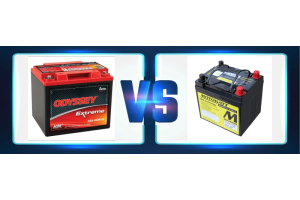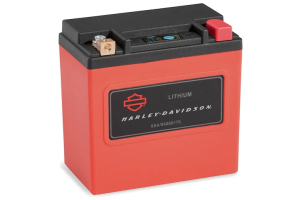Understanding Deep Cycle Batteries
Deep cycle batteries are suitable for a variety of different applications that require sustained delivery of power over an extended period. Start, Light and Ignition (SLI) batteries are designed to briefly deliver substantial cranking amps through numerous cycles. In contrast, a deep-cycle battery typically discharges 50-70 percent of its capacity before needing to be recharged.
Construction
There are two types of deep-cycle batteries including flooded lead acid and valve regulated lead acid. Each battery includes thick plates that serve as electrodes, usually consisting of lead or a lead antimony alloy. The electrodes are fashioned into plates and then inserted into the battery casing. Electrolyte liquid fills the cells, which are separated by a porous divider. A 12-volt battery configuration includes six electrode plates that supply about 2 volts each.
The thickness of the plate determines the total quantity of reserve energy stored in the battery. Plate density allows for slow current discharge over an extended period and effectively delays cycling degradation. Plate thickness also directly affects the service life of the battery. Worn electrodes eventually become too thin and lose capacity, until they can no longer effectively conduct current.
Battery Applications
As researchers and developers focus on meeting consumer demand for renewable energy sources, the potential applications for deep-cycle battery technology continue to expand. In fact, entire industries have emerged as a result of improvements in sustainable battery capacity. There are a variety of useful products that require a battery with a high amp-hour threshold. Among these include the following:
* Golf Carts
* Forklifts
* Boats
* RVs
* Motorized Wheel Chairs
* Off-Grid Solar Systems
* Backup Power Systems
Even modern vehicles with power draining video systems and stereos often benefit from the enhanced capacity of deep-cell technology.
Maintenance
Since extended capacity batteries are not maintenance free, it is important to adhere to a regular schedule of practices that improve performance and maximize battery life. Recently purchased batteries should be cycled repeatedly at a depth of 50 percent or less before applying a full capacity charge. Distilled water should be routinely added after charging without filling past the level indicator.
Most importantly, batteries should never be discharged below the 80 percent threshold of their total capacity. Repeated discharges in excess of 80 percent can lead to advanced deterioration of the plates and reduced battery life. For battery charging, a “smart” charger with a descending current feature is recommended. Extended current batteries benefit from a slow charge over several hours.
Battery Technology Differences
Both deep-cycle and SLI batteries are based upon the same lead-acid chemistry process. Auto batteries are designed to provide the short-term surge in current required to ignite a combustion engine. This ongoing process should never result in a drain exceeding 20 percent of total capacity.
Deep-cycle batteries deliver a low level of current over an extended period of time. These batteries are designed for repeated deep-current release and can be recharged numerous times without degrading performance. Automotive batteries have more cold cranking amps but much less reserve capacity.
The continued development of deep-cycle technology will result in the production of battery products with extended life, greater power and an expanded assortment of practical applications.





